![]()
My name is Mark Nichols, and the following are excerpts from my book, which describes how I co-founded an international telecommunications company, Digital Island, where I was responsible for the globalization of the internet and web.
It is essential that I first share and explain that the software codes of the Internet protocol suite, aka TCP/IP (c. 1974, Bob Kuhn & Vint Cerf, et al.), and the World Wide Web (c. 1989, Tim Berners-Lee), are what eventually led to the creation of a seamless worldwide physical networking infrastructure that is now colloquially called the “internet and web.”
The TCP-IP framework software, which organizes the set of communication protocols used on the internet, and the World Wide Web software, which enables content sharing over the internet, are recognized as among the greatest software coding contributions to all mankind, and those contributions are of obvious and great significance. Clearly, though, the software in a web server does not physically make the internet; the actual realization of the internet as a global network is a totally separate endeavor, with billions of dollars in capital investment and many different and entirely distinct areas of network and infrastructure specialization.
The following content on this site will provide some of the history of my team’s entrepreneurial efforts that began with creating and assembling the business case, network architecture, customer acquisitions, specialized human collateral, and the $779 million in speculative venture capital investment to realize the potential those software codes were capable of on a worldwide scale. Subsequently, the realization of internet protocols and World Wide Web software technologies, when combined as originally intended with the physical global network infrastructure, triggered the explosive exponential growth of the internet and web, thereby fundamentally and profoundly transforming our modern civilization.
____________________________________________
I decided to write this book with the initial encouragement of my daughters, who suggested I use it to teach university-level business students about entrepreneurialism and start-up technology enterprises, including the study of the principles and concepts of potential Wall Street investments via initial public offering (IPO). To view the book on my Amazon page, click here.
![]()
First, envision yourself going back in time to 1996. Now take a look at the illustration above; the blue lines are the areas of service for regional internet service providers (e.g., France Telecom, Japan Telecom, Singapore Telecom, Deutsche Telekom). And the red lines are the international private line circuits that I contracted for and put into service in all major metros with the largest ISPs and connected them altogether for the world’s first internet protocol-based, global wide area network.
How did the caterpillar become a butterfly? Now visualize:
1. Take away the red lines—that’s the “internet caterpillar” of 1996. This is before the first global network to facilitate seamless end-to-end internet access to all major metros and internet-available service areas around the world.
Without seamless global connectivity, there was no World Wide Web outside of the software code that goes into machines on local hosts. Which means the software code that’s named the World Wide Web was being used in applications by the ISPs in only regional wide webs. Thus, the utility of the proposed World Wide Web was theoretical. It could be done with the software code, but nobody had yet put the code into service on a global network.
At the time I began building this network in 1996, ISPs were territory-focused within their own regional network infrastructure. An example is France Telecom and Japan Telecom, which mostly service French and Japanese businesses and consumers, respectively. They offer services only for internetworking access to content, mostly within their sphere of influence and legal borders that physically and legally limit their network footprint and geographically restrict the customers who buy access to them. By design, regional ISPs did not guarantee access to content outside of their networks, especially to content in separate countries or stored in networks located on other continents. There wasn’t the business proposition to create a worldwide and global ISP to do so at the time.
For instance, Rostelecom in Russia was not connected to Embratel in Brazil, Malaysia Telecom was not connected to Telefonica in Spain, Korea Telecom was not connected to NetVision in Israel, etc. It was too expensive, and the economies of scale had not yet been financially presented with a solution to envision shareholder return on such a networking endeavor. You could have a website or web-centric application anywhere in the world, but that does not mean everybody in the world could access or use it.
2. Now put the red lines back in—that’s the “internet butterfly” infrastructure metamorphosis of globalization. These global private lines spanning the world created the first global ISP backbone, interconnecting all major regional ISPs within each metro, thus realizing the full capability of the internet suite of software protocols.
By January 1999, the Digital Island network had connected all the world’s major ISPs that were currently available for internet connectivity, including those in England, France, the Netherlands, Germany, Spain, Russia, Israel, Mexico, Brazil, Australia, Singapore, Malaysia, Hong Kong, Beijing, Taiwan, Japan, South Korea, Canada, Miami, New York, Los Angeles, Boston, Chicago, Virginia, Seattle, Honolulu, Palo Alto, and Santa Clara.
Because our global network services did not pre-exist prior to our start-up, we were able to contract to host and broadcast the websites and networking infrastructure to 881 customers in under four years from our company’s inception. These clients included Cisco Systems, Stanford University, Microsoft, Google, Visa, Intel, Compaq, Hewlett Packard, eTrade, Charles Schwab, Novell, National Semiconductor, MasterCard, Sun Microsystems, Sandpiper Networks, Candle Corp, NetGravity, Canon, AristaSoft, Universal Music Group, ABN Amro, UBS Warburg, Digital River, Wall Street Journal, Financial Times, EBSCO Publishing, Fox Broadcasting, ZDnet, Reuters, Kenneth Cole, MSNBC, Major League Baseball, Time Warner-Road Runner, AOL, CNBC, JP Morgan Chase, Sony, Bloomberg, and over 800 others.
Note that with 881 customers in four years and with 220 business days a year, our customer acquisition rate averaged more than one new customer every business day for four years.
____________________________________________
Beginning in June, July, and October of 1996, I used the following three drawings to communicate my networking proposal for the globalization of the internet.
The first image is my original handwritten drawing, which conceptualizes my planned globalization of the internet. In the document below, the figurative discussion points-of-presence (POPs) represent the proposed global networking of Asia Pac, the Americas, and Western Europe, and the unnamed points-of-presence represent the “rest-of-world” in this discussion document.
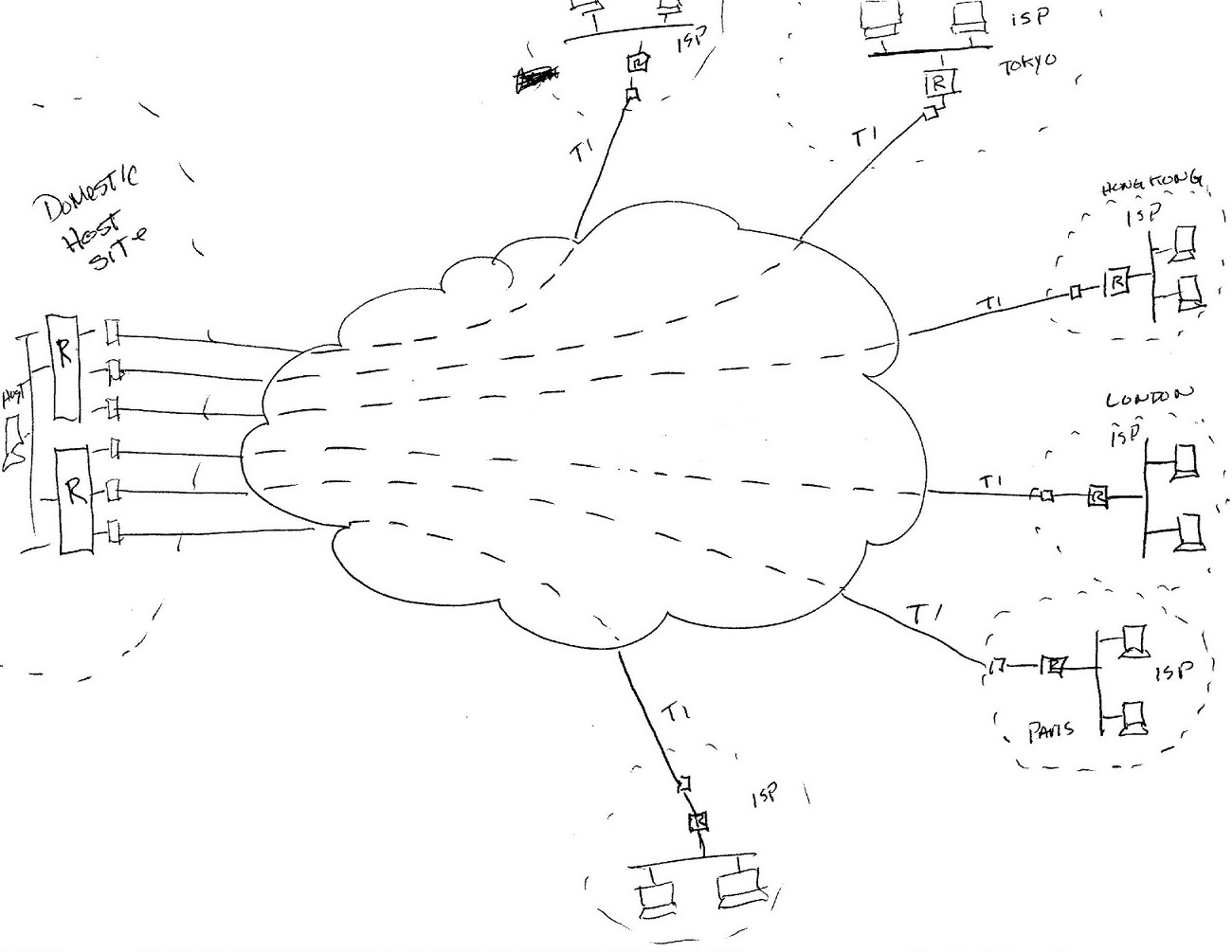
The Genesis Network Diagram to Globalize the Internet, by Mark Nichols, June 1996.
____________________________________________
The image below is a global internetworking rendering I made in the spirit of the above hand drawing that I “drew” with my CAD software program on my home PC (Mac IIcx purchased in 1990). Note that, at this time, I’ve already positioned the network hub to be located in California.
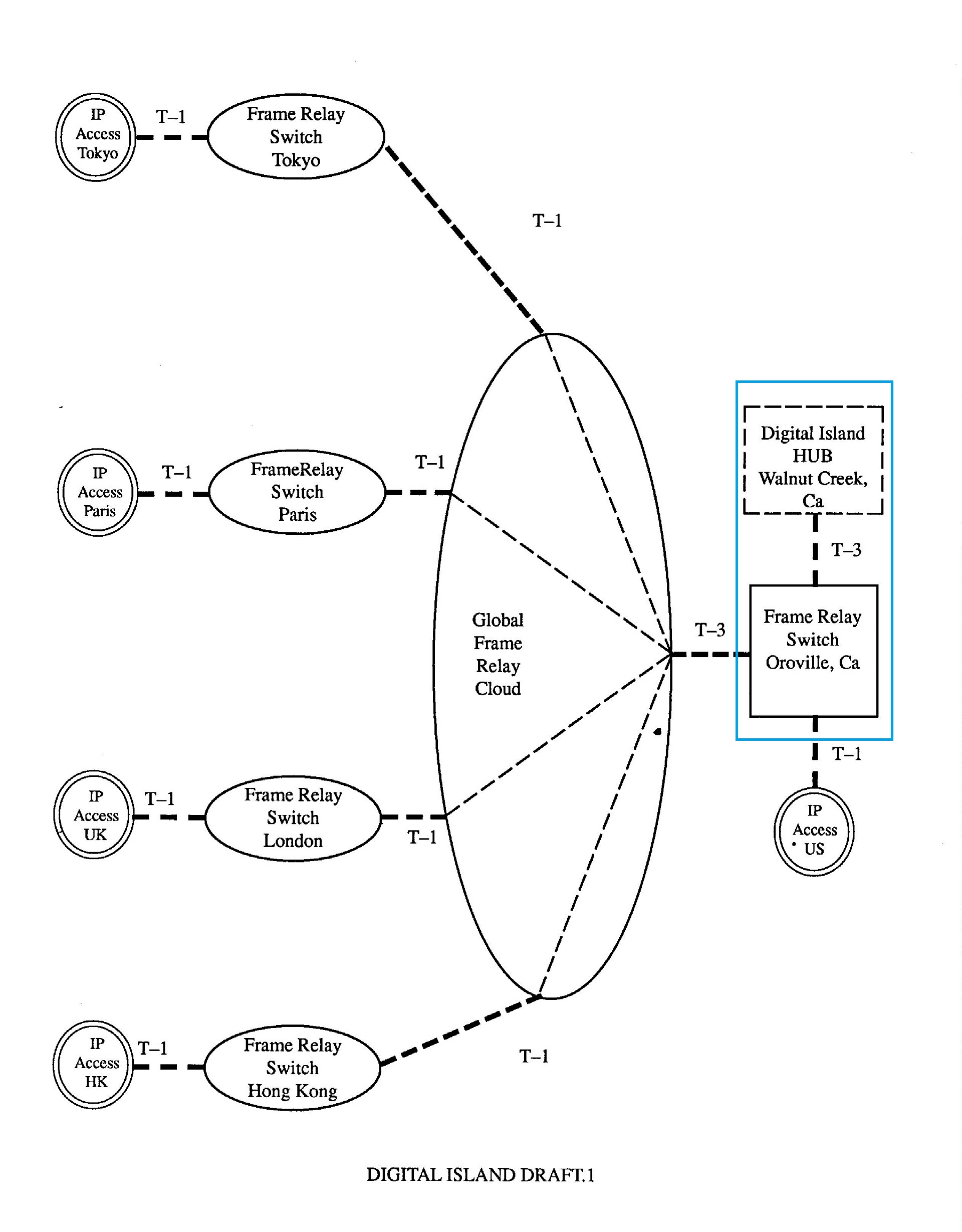
CAD Network Diagram to Globalize the Internet, by Mark Nichols, July 1996.
____________________________________________
The image below is my v.2 CAD global internetworking rendering that I drew and used for the Cisco Systems hosting discussions. This drawing was included in the service contract addendum (shared below) for hosting the www.cisco.com website. Note to peers: the frame relay was swapped out to clear channel IPLC in Q1, 1997, after proof of concept in Q4, 1996.

CAD Network Diagram to Globalize the Internet, by Mark Nichols, August 1996.
____________________________________________
On November 7th, 1996, I contracted with Cisco Systems to host the www.cisco.com website. I productized and articulated the hosting services, calculated the financial modeling, negotiated the terms of service for the QOS metrics, and personally endorsed the document at the Cisco Systems HQ campus. We used this contract, which formalized our agreement, as a proof of concept to secure our angel financing and over $779 million in subsequent rounds of investment. Keep in mind that when the contract was signed, we were a 90-day-old, three-person company, and we now needed to hire many very qualified and talented people to support our commitment to Cisco to acquire and manage the network infrastructure to globalize the internet.
At the start of 1996, Cisco ranked #587 in the US Fortune 1000 for capitalization value. Three years later, in 1999, Cisco became the world’s most valuable company. Founded in 1984, Cisco achieved this level of success for the first time in history that an internet company ranked as the #1 most valuable company in the USA and the world, and they accomplished it in just 15 years from startup. During this time, we were the web hosting contractor for Cisco, which provided that global scalability.
Digital Island’s aggregated global infrastructure acquisitions and network resources provided a testament to the capabilities, value proposition, and pent-up demand of the internet protocol suite and the utility of modern networking inventions. Additionally, it was a significant milestone achievement for the leadership, venture capitalists, employees, and the entire ecosystem of partners from around the world who participated in this technology and services that paved the way for explosive exponential growth that would profoundly reshape modern societies and the entirety of human civilization.
This web hosting contract with Cisco Systems is considered, without equal, the “Gold Standard” of internet hosting services. From this service agreement forward, we began the globalization of the internet and world-wide web software technologies, which became the world’s dominant information systems platform.
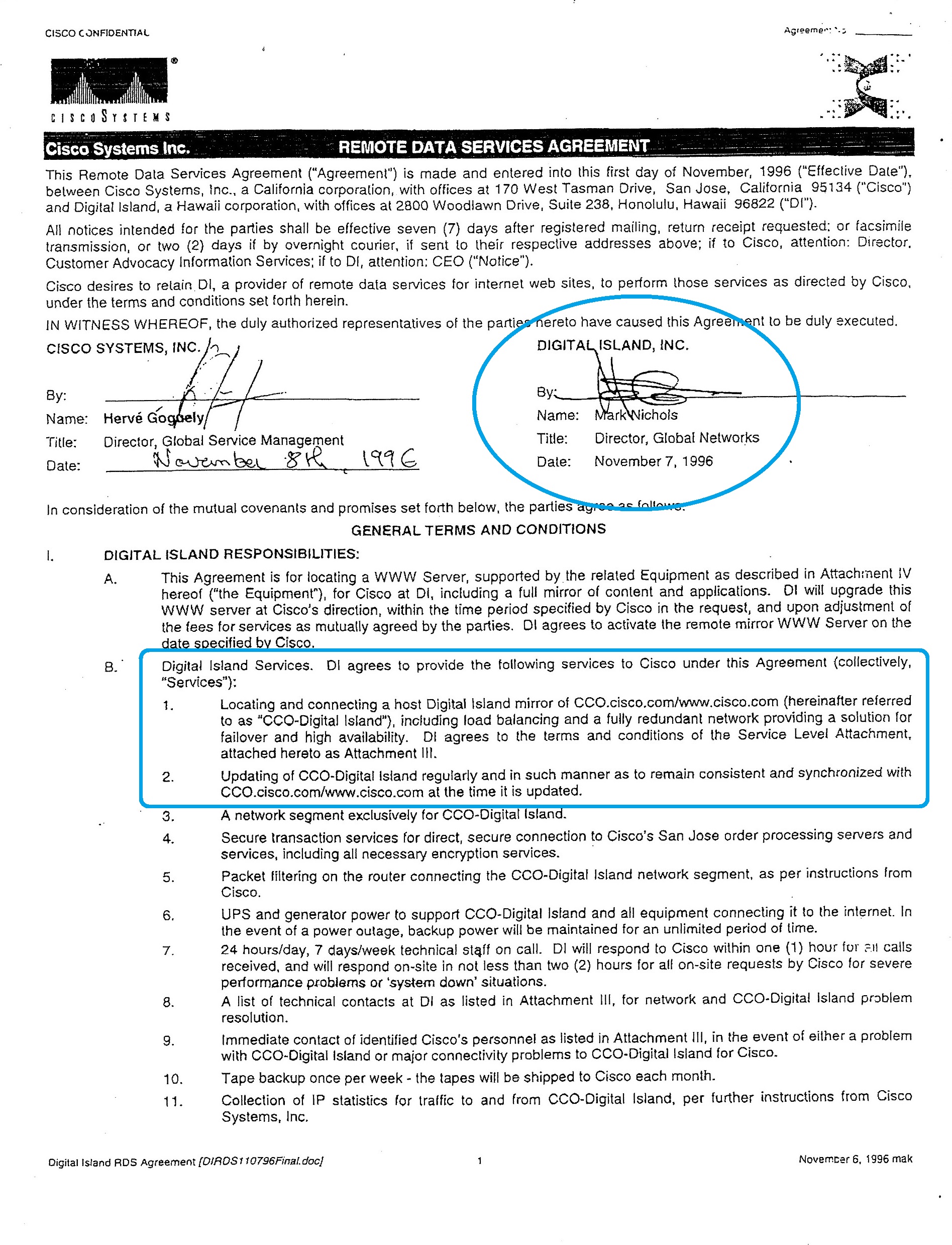
____________________________________________
Below is our company’s first press release announcing the above services contract to host the Cisco Systems web site and the announcement of our “NEW GLOBAL NETWORK.” January 1997.
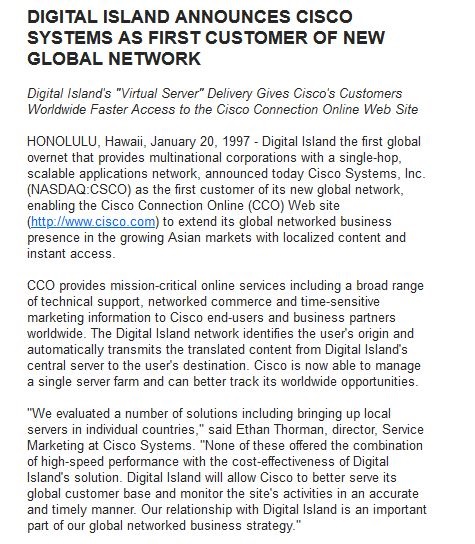
____________________________________________
Our second customer acquisition press release is below for the collaboration we made with Stanford University for their e-publication and e-learning services. Consider that Stanford was one of the first two nodes of the internet (along with UCLA), and we were hosting and broadcasting their website. Our services also included providing Stanford with the internet platform that the founders of Google used for upstream ISP connections to build the first repository of Google search results, while the founders were graduate school students at Stanford University in 1998 (google.stanford.edu).
With Cisco and Stanford as our first two clients, the world of technology and finance began to take serious notice.
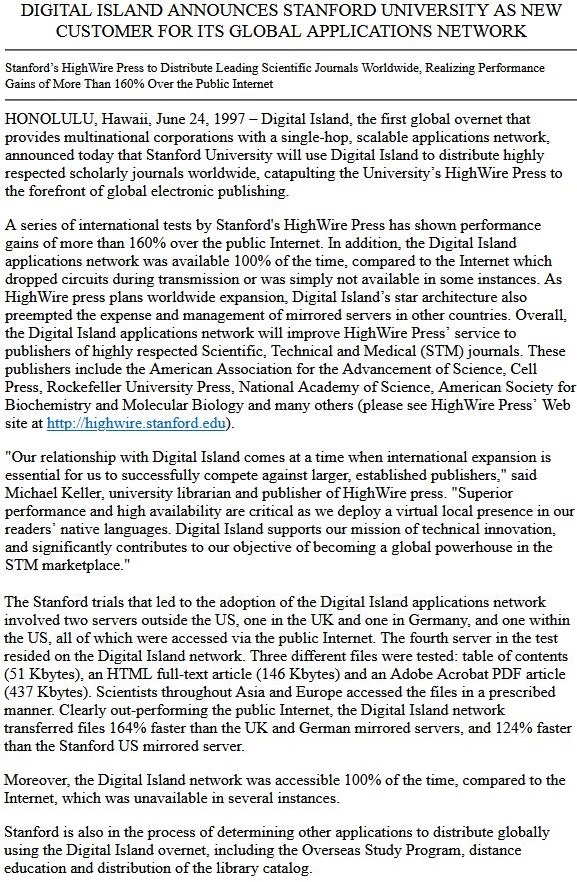
____________________________________________
The press release below from 1998 is for eTrade customer acquisition, investment, and board seat. Prior to this, we had Visa on-network since 1997, and it was only a few months later that we brought online Charles Schwab and MasterCard. Seamless and global eCommerce on a six-continent scale had been realized, in effect for the first time in every major metro worldwide and only available on our network.
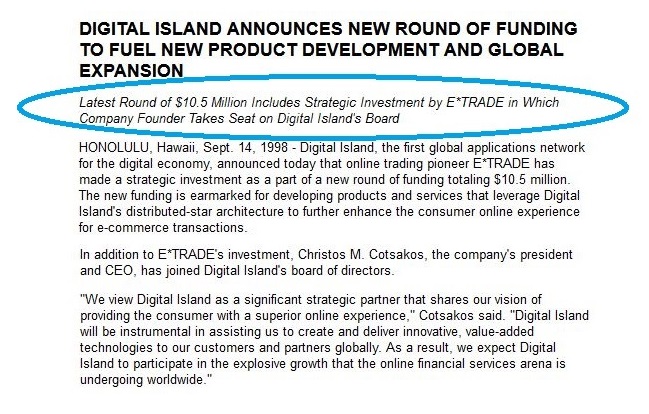
____________________________________________
For a little trip down memory lane, the three images below are scanned copies of the original receipts for the first tranche of SunMicro servers we acquired to build our global network and make the web worldwide. The shipping dates are from the month of October 1996.
Note that the shipping of the servers is addressed to my residence in Alamo, CA, because at this time our three-person start-up team doesn’t yet have an office space, a data center, or a customer (that’s all a month or more away).
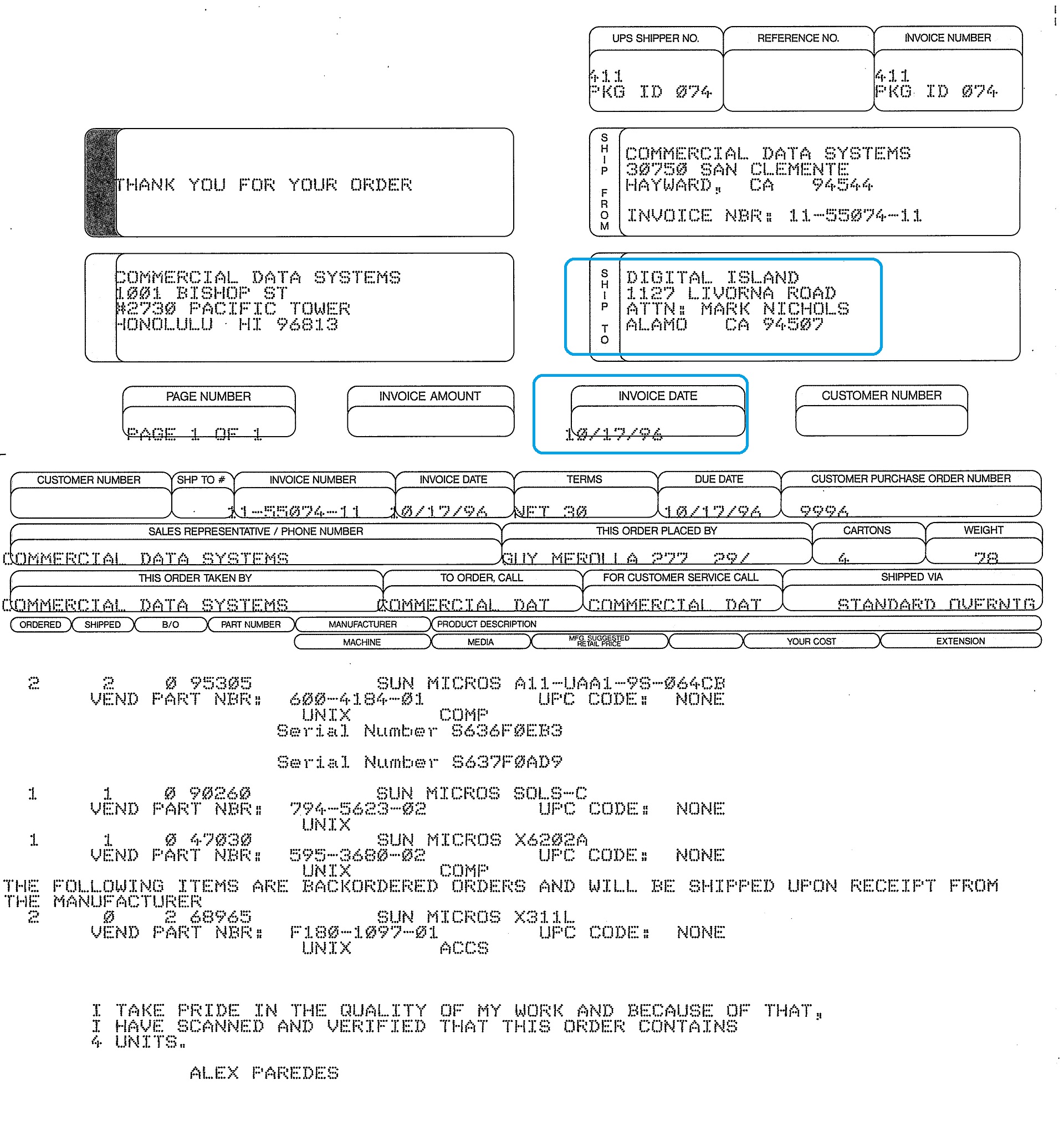
____________________________________________
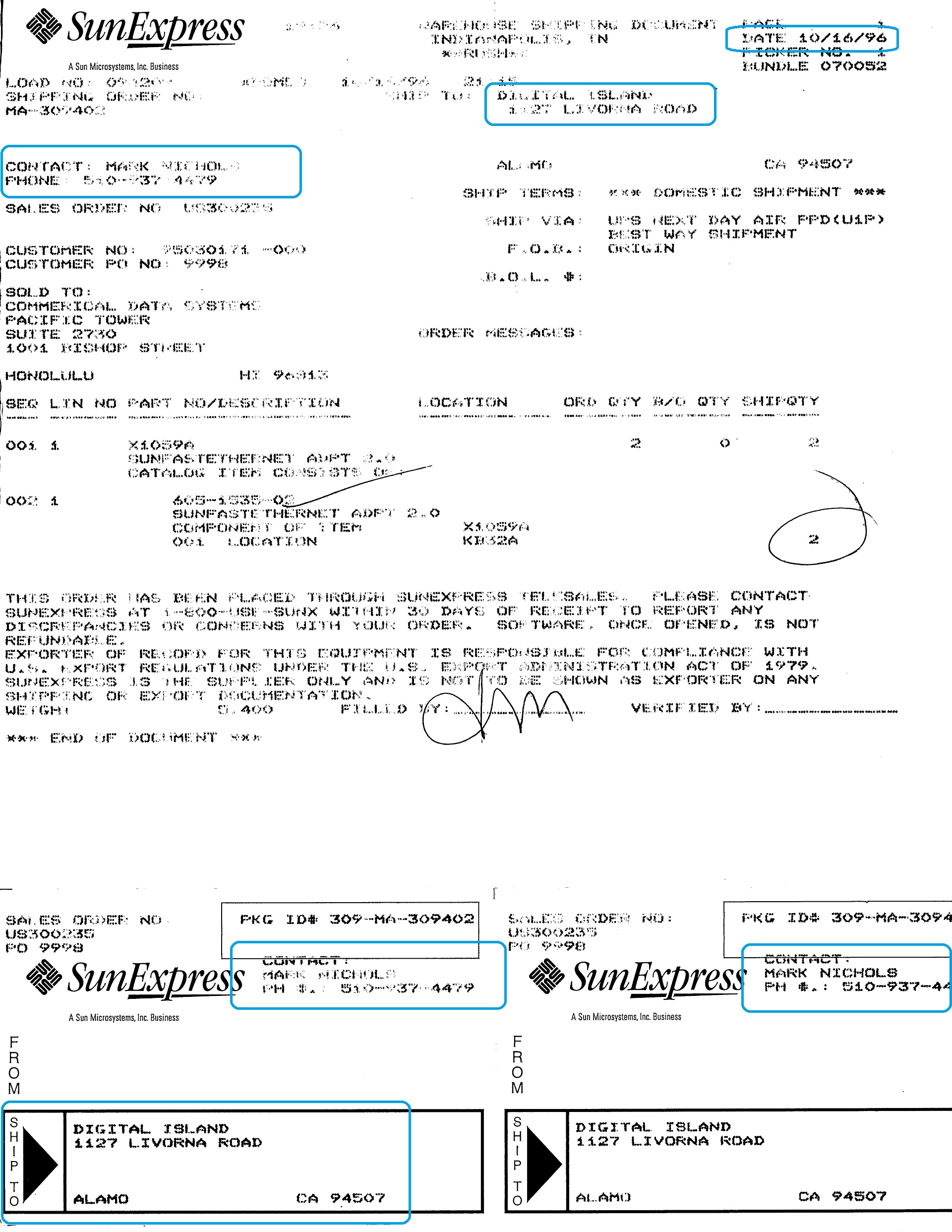
____________________________________________
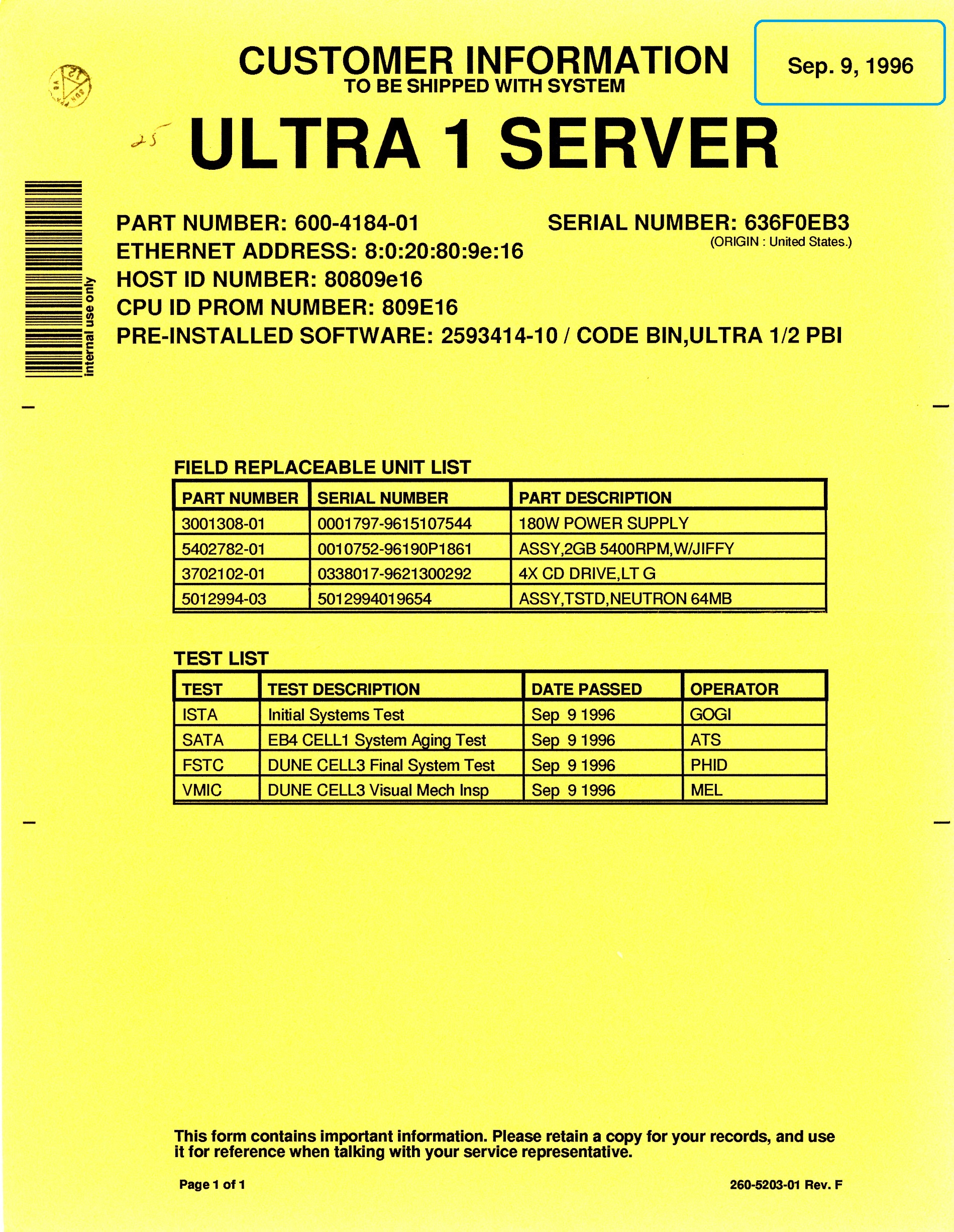
____________________________________________
The following images are a sampling of the pages from my passport, which document my business development travels to acquire the infrastructure to build our global network.
The first image below, with the blue square outline on the right side, is from Beijing, where during my visit I negotiated and contracted for the first internet access to the People’s Republic of China, and more specifically, to access the China Education and Research Network (CERNET).
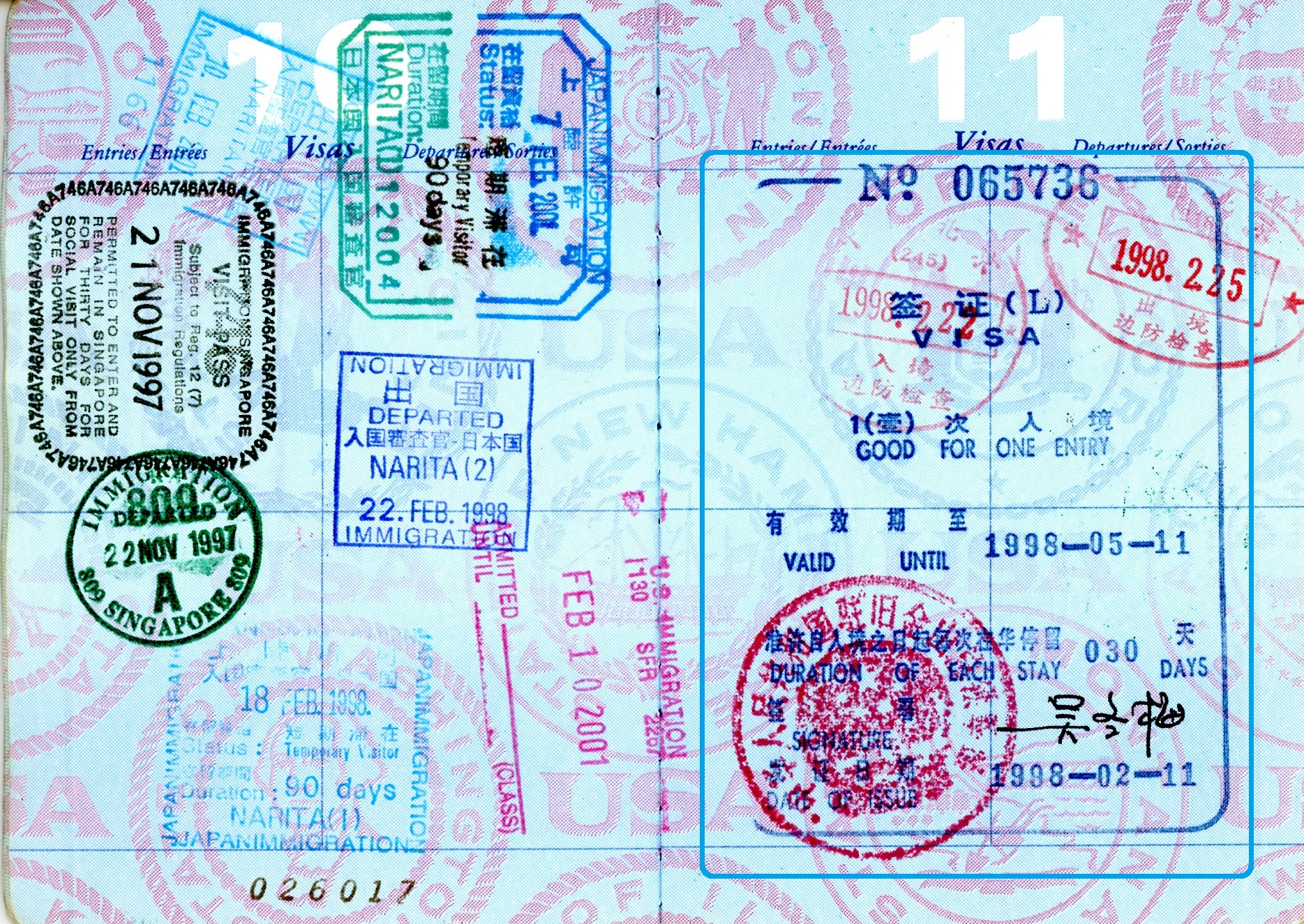
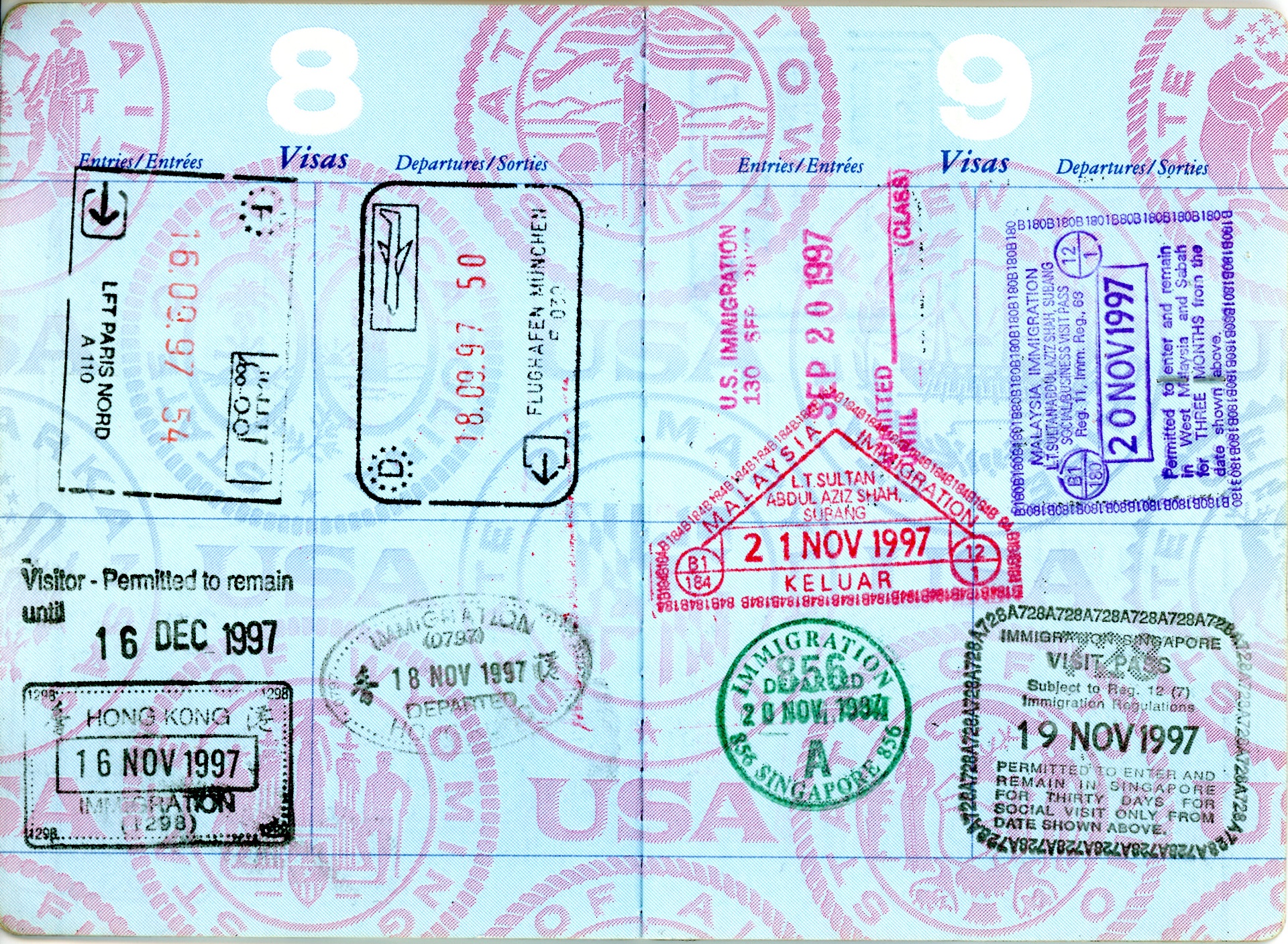
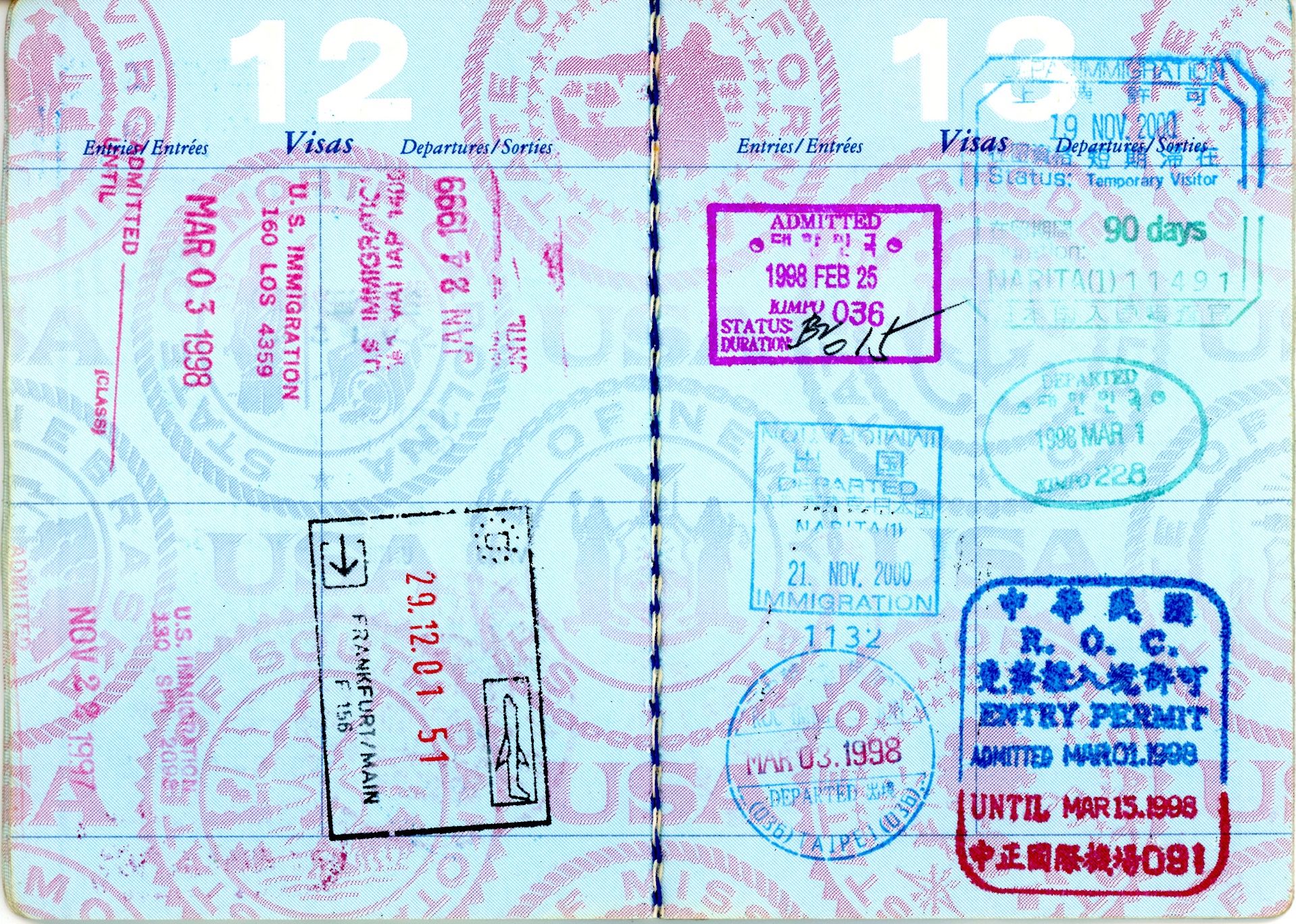
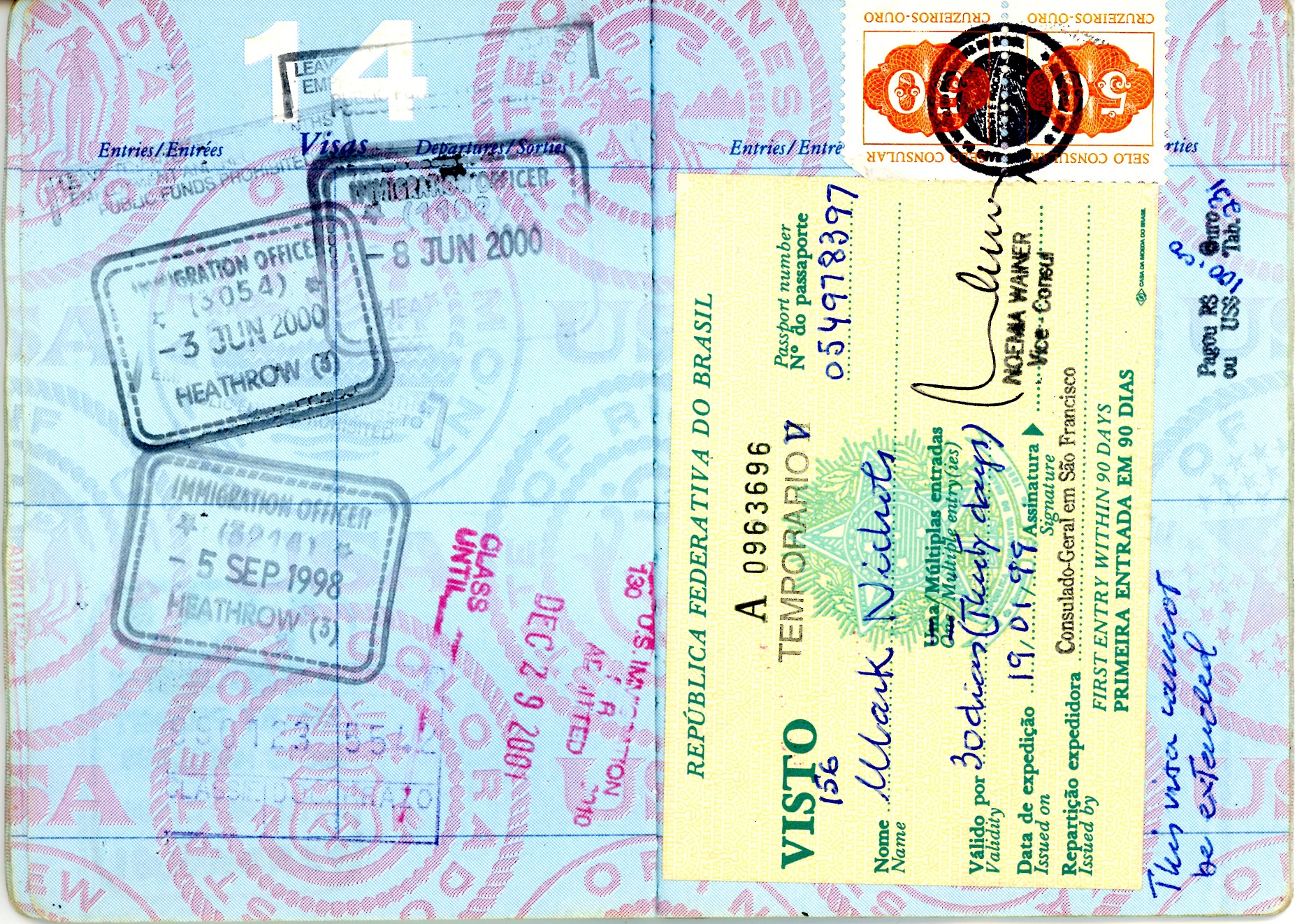
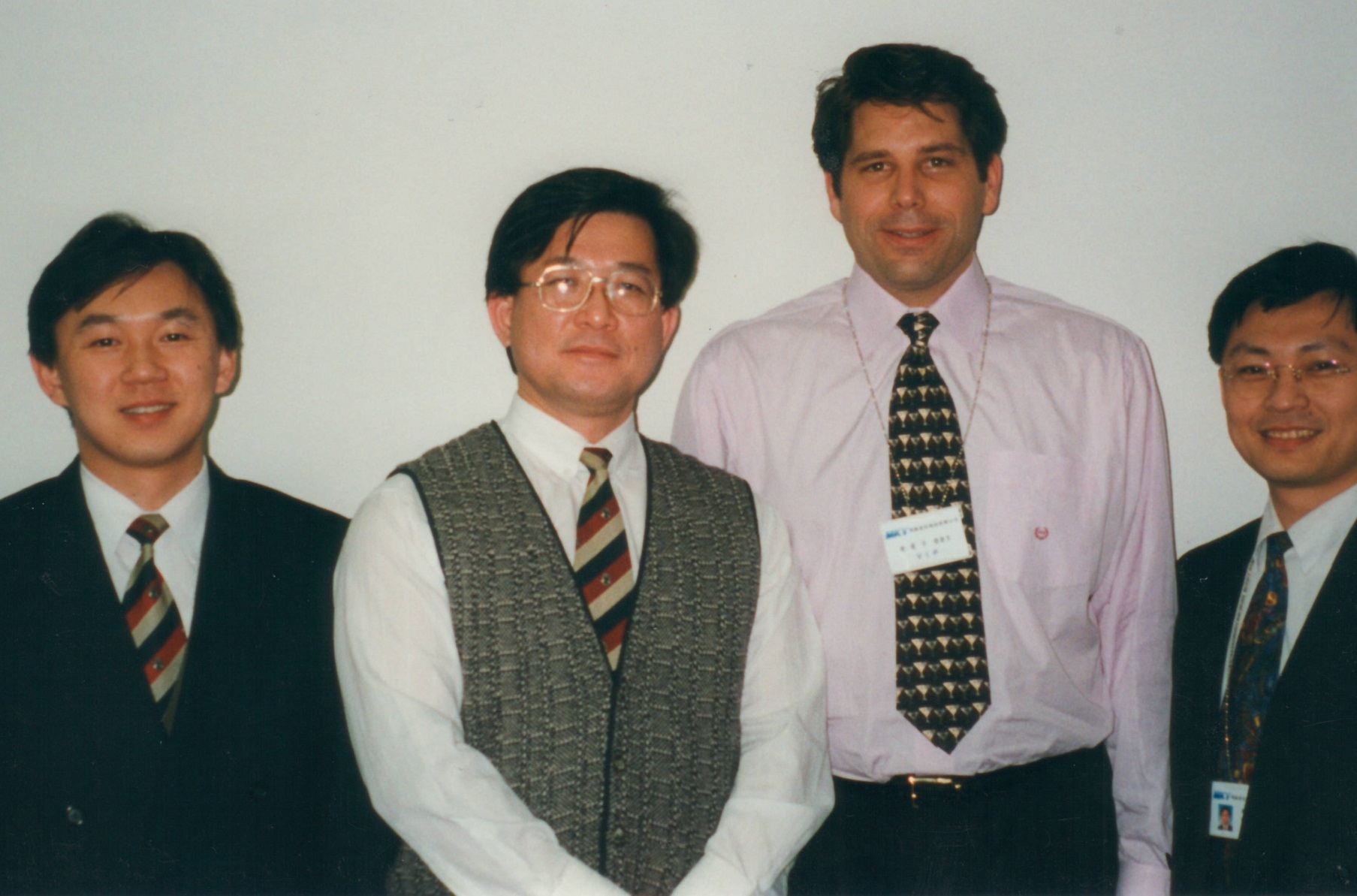
____________________________________________
The following press releases are about the data centers I acquired around the world to add to the infrastructure required to build our global network and facilitate what shortly thereafter became the world’s largest media streaming network.
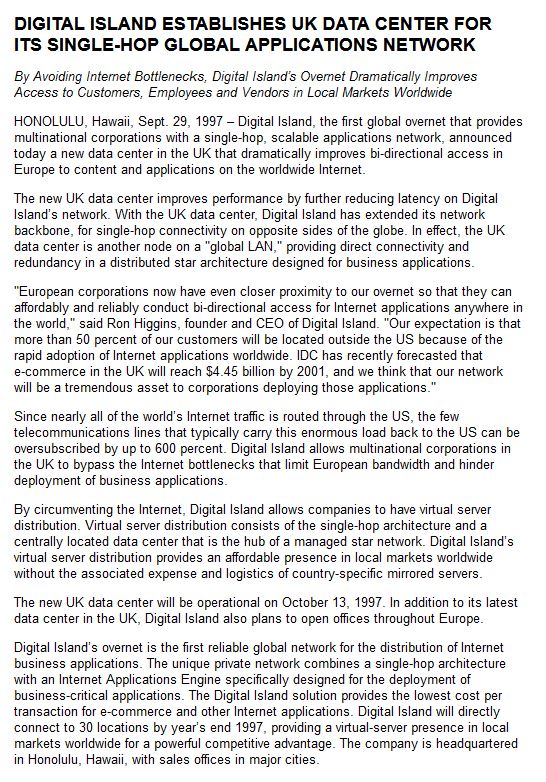
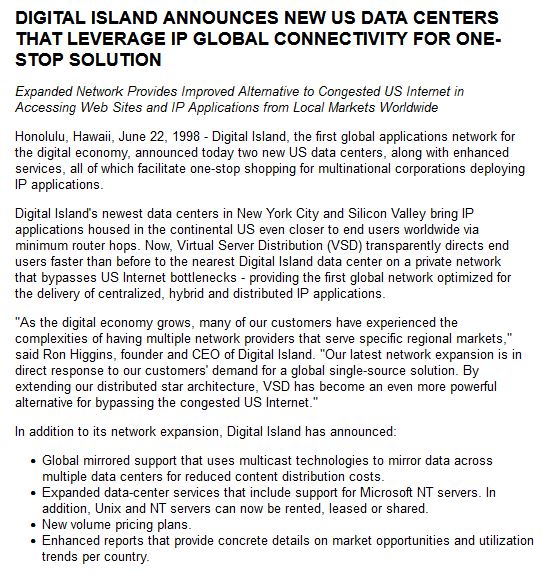
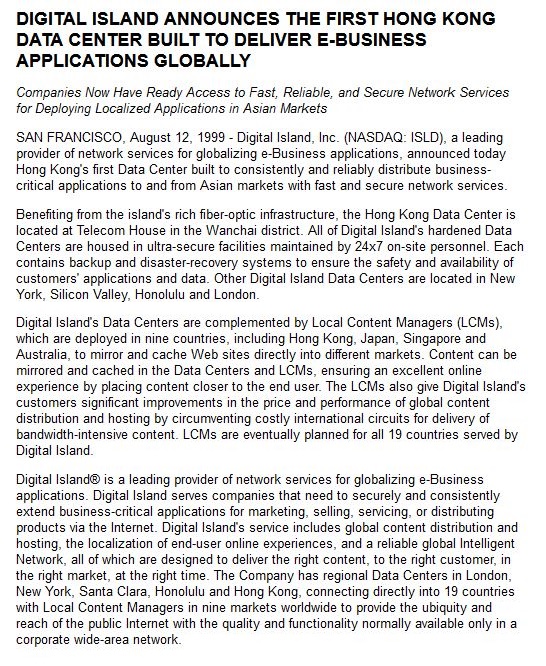
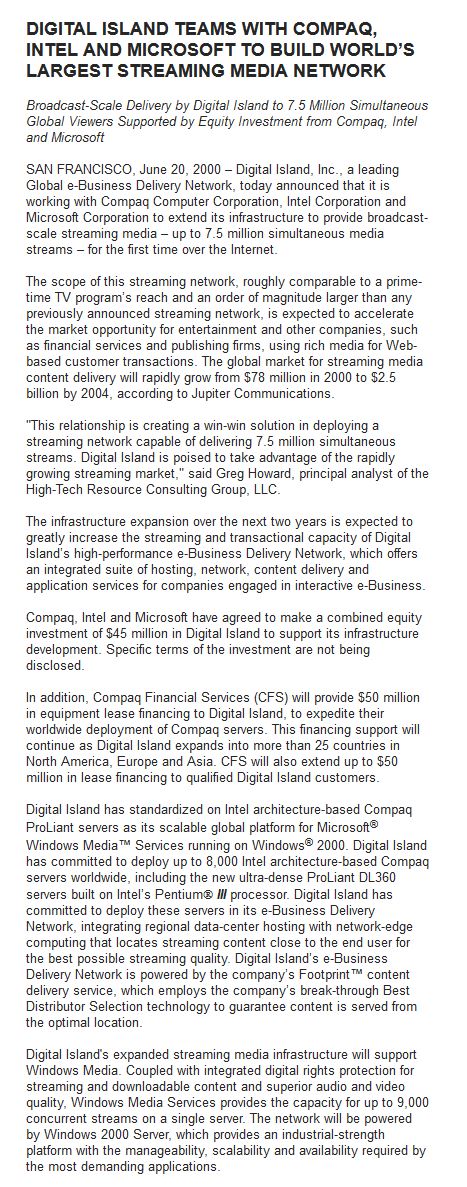
____________________________________________
Financing to acquire the Digital Island global network infrastructure was made through the following investments:
$300K Angel Investment, ComVentures, November 1996
$3.5M Series A, January 1997
$10.5M Series B, March 1998
$10.5M Series C, September 1998
$50M Series D, March 1999
$60M Initial Public Offering NASDAQ (ISLD). See the image supporting the S1 filing below.
$45M Private Equity investment from Microsoft, Intel, and Compaq Computers. See CMS MarketWatch article below.
$600M Private Secondary Offering, Goldman Sachs
$779.8M total equity raised
$12B publicly traded valuation at high water mark
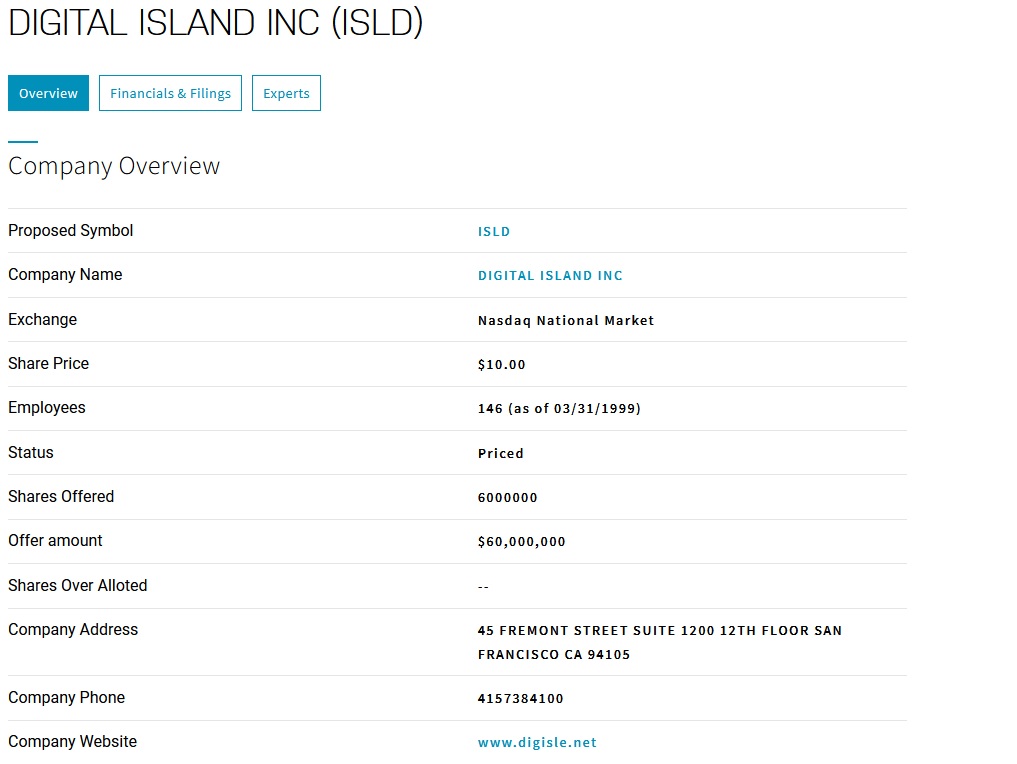
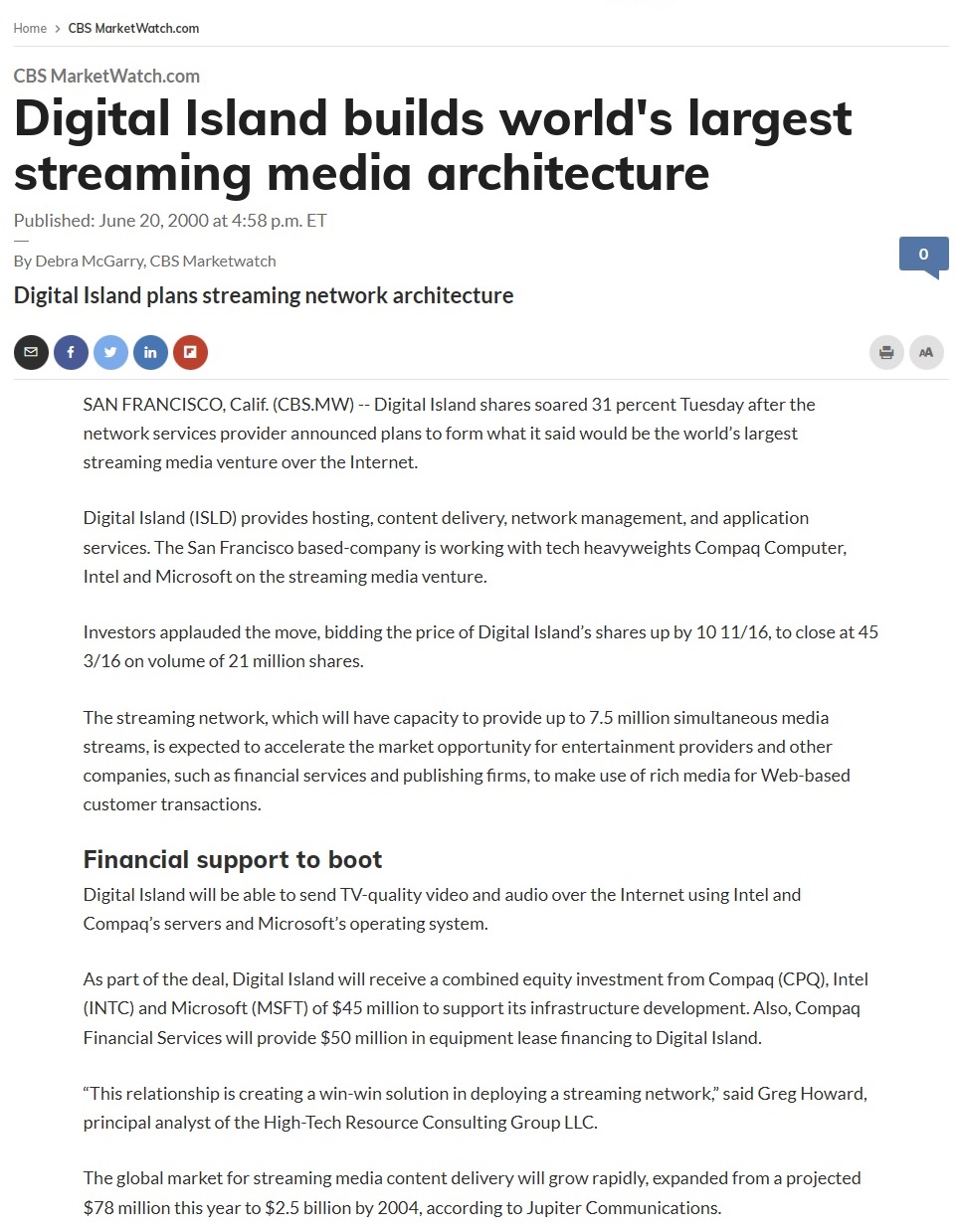
____________________________________________
On the global scale of internet use at the end of 1995, there were 23,000 websites throughout the entire world available to 7 billion people, and only 7,000 of those were not “adult-themed” content, which I will refer to specifically hereafter. I personally owned and operated one of those 7,000 websites (www.perfectwheels.com sold to Universal Cycles in 1998), which made me a 1-in-a-million person on earth who owned and operated a website at the beginning of 1996. Additionally, those same metrics numerically invert to only 1 website per 1,000,000 people. Now, in 2023, there’s 1 website for every 8 people, for a growth rate of 43,500 times the increase in websites in just 28 years.
Correspondingly, the number of internet users at the end of 1995 was 16 million worldwide; that’s only 1/5 of 1% (.002%) of the world’s population. The geographic distribution of those users was 2/3rds were located within the USA, and the rest of the world was cumulatively 1/3% of .002% of the population at .00075%. Now, at the time of this writing in 2023, there are 6 billion people using the internet worldwide, or 65% of the population, which represents a 375-fold increase in internet user participation in just 28 years.
Clearly, with the adoption metrics at 43,500-times more websites and 375-times more users in 28 years, the market opportunity for advancements in human communications and eCommerce was pre-existing. But, prior to 1996, the globalization opportunity had not yet been manifested with infrastructure and peering investments by the incumbent and monopolistic telcos in cooperation with governments. The incumbent telcos could have done it, but they, together with governments, strategized not to. Further detail of their depravity and corruptness is beyond the scope of this introduction, but I address the Presidential Order that initiated the change in the vulnerability of human communications and the government-sanctioned retardation of such by the telecom monopolies in Chapter 1 of my book.
With the above in mind, there wasn’t a business case for regional ISPs to subsidize the investment of infrastructure from the monopoly telcos and interconnect with the rest of the world’s ISPs. This means, from a user perspective, that not everyone could see my website because their ISP wasn’t connected to my ISP. Therefore, having a website and an ISP hosting and broadcasting your content using WWW code did not mean your website was worldwide, and in reality, it was quite the contrary. Thus, at the time, the inherent vice of the Internet and World Wide Web technology is that not all ISPs are internetworked with each other, and where the interconnection doesn’t exist, there will be no service guarantees amongst users who are not on the same network.
Keep in mind that websites are a very recent innovation and a communications phenomenon. The Mosaic web browser, the first to display images in line with text instead of in separate windows, deserves recognition for this proliferation. The National Center for Supercomputing Applications at the University of Illinois at Urbana-Champaign developed the browser, which saw its first public release in 1993. It is impossible to quantify the voluminous merit of how indispensable it was in popularizing the use of the general internet through the integration of multimedia.
____________________________________________
If you found the above to be of interest, please consider reading the book, as there is much more information about the adventure of creating the enterprise. In the current form of the first edition, the book is under 100 pages in its entirety, and much of that, maybe 40 pages, are images. My goal was to write a “show and tell” using the contracts, press releases, photos, email communications, diagrams, and such, with the purpose of the written prose to give context to the images. For time budgeting, I estimate it will take most people less than three hours to read. I tried to employ a writing style for non-industry people to make the story interesting and the readability accessible to everyone, but there is enough information to keep those who are in the industry captivated and informed.
How to contact Mr. Nichols
If you would like to contact me for a discussion about a speaking invitation for your school or institution, an educational series for students or employees, or something else, you can text or call 1-775-600-3400, or use this email: mn@marknichols.com
My book, How I Made the Web World Wide, is now available on Amazon. Click here to go to my Amazon page.
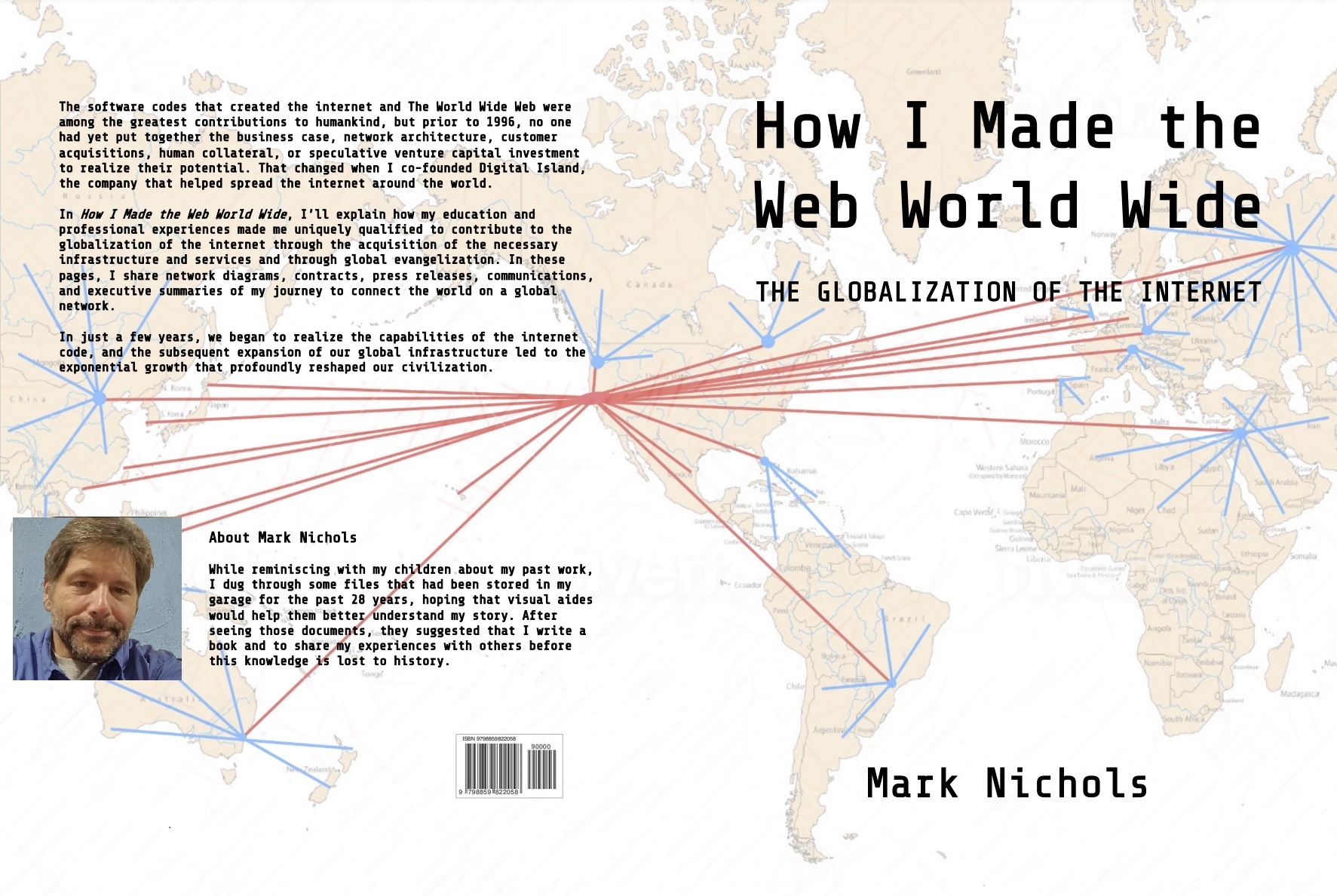
____________________________________________
May I simply say what a comfort to discover someone that really knows what they are talking about on the internet. You actually realize how to bring an issue to light and make it important. More people must look at this and understand this side of the story. I cant believe you are not more popular since you surely have the gift.